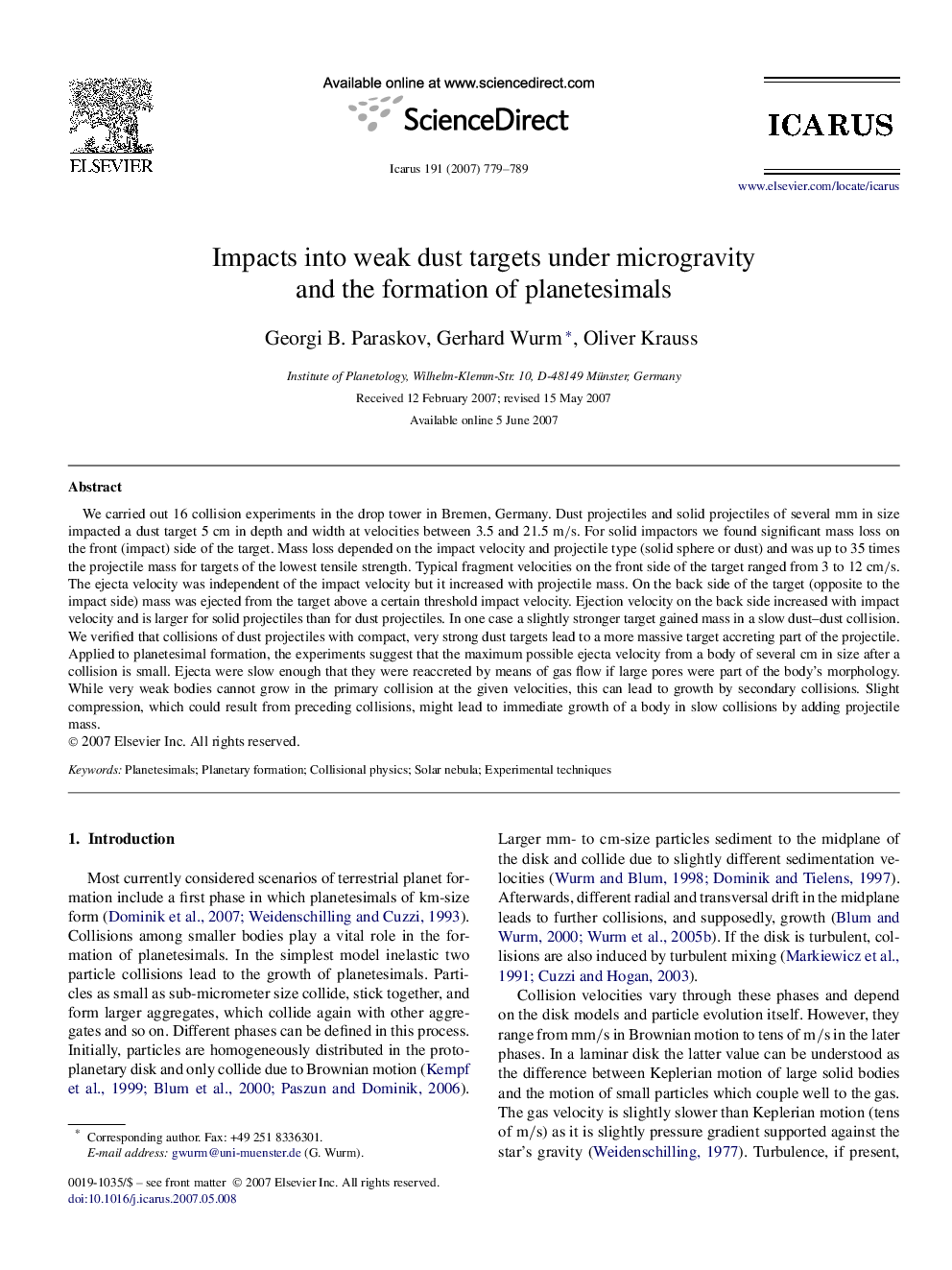| Article ID | Journal | Published Year | Pages | File Type |
|---|---|---|---|---|
| 1775490 | Icarus | 2007 | 11 Pages |
We carried out 16 collision experiments in the drop tower in Bremen, Germany. Dust projectiles and solid projectiles of several mm in size impacted a dust target 5 cm in depth and width at velocities between 3.5 and 21.5 m/s. For solid impactors we found significant mass loss on the front (impact) side of the target. Mass loss depended on the impact velocity and projectile type (solid sphere or dust) and was up to 35 times the projectile mass for targets of the lowest tensile strength. Typical fragment velocities on the front side of the target ranged from 3 to 12 cm/s. The ejecta velocity was independent of the impact velocity but it increased with projectile mass. On the back side of the target (opposite to the impact side) mass was ejected from the target above a certain threshold impact velocity. Ejection velocity on the back side increased with impact velocity and is larger for solid projectiles than for dust projectiles. In one case a slightly stronger target gained mass in a slow dust–dust collision. We verified that collisions of dust projectiles with compact, very strong dust targets lead to a more massive target accreting part of the projectile. Applied to planetesimal formation, the experiments suggest that the maximum possible ejecta velocity from a body of several cm in size after a collision is small. Ejecta were slow enough that they were reaccreted by means of gas flow if large pores were part of the body's morphology. While very weak bodies cannot grow in the primary collision at the given velocities, this can lead to growth by secondary collisions. Slight compression, which could result from preceding collisions, might lead to immediate growth of a body in slow collisions by adding projectile mass.
